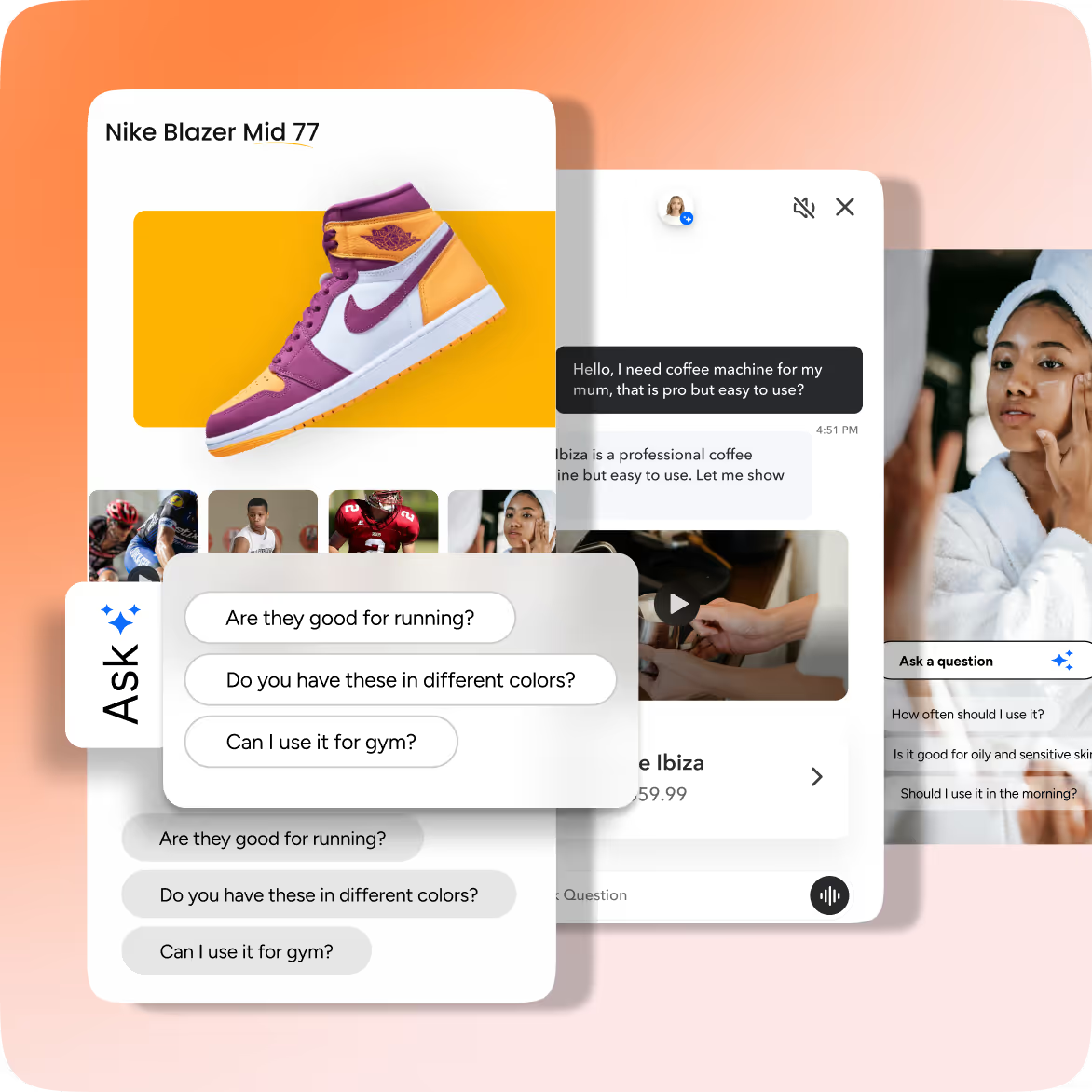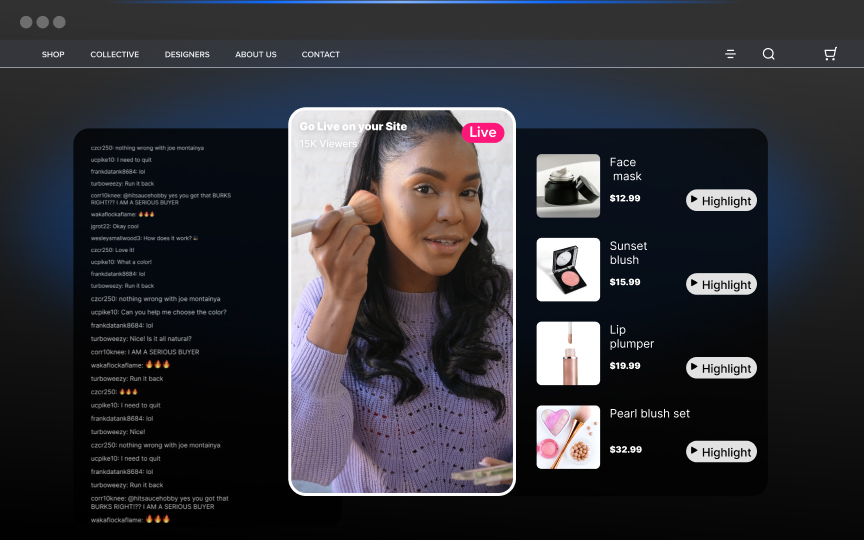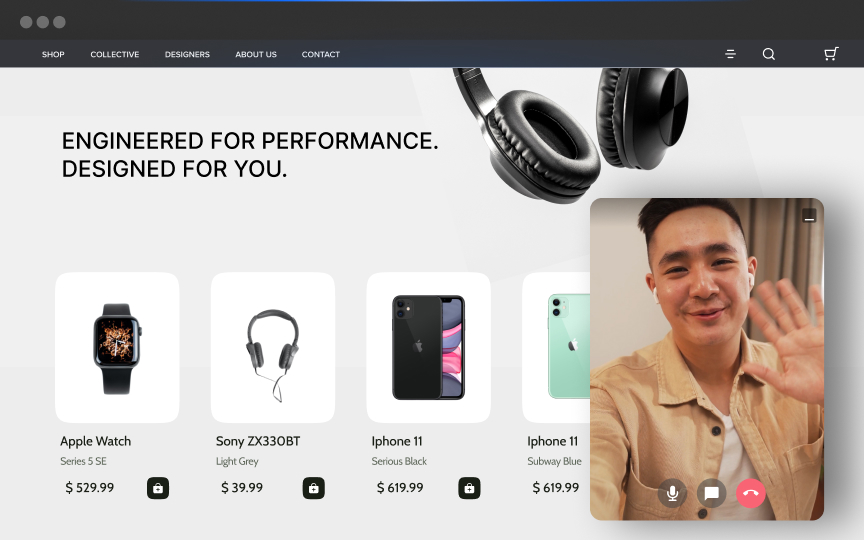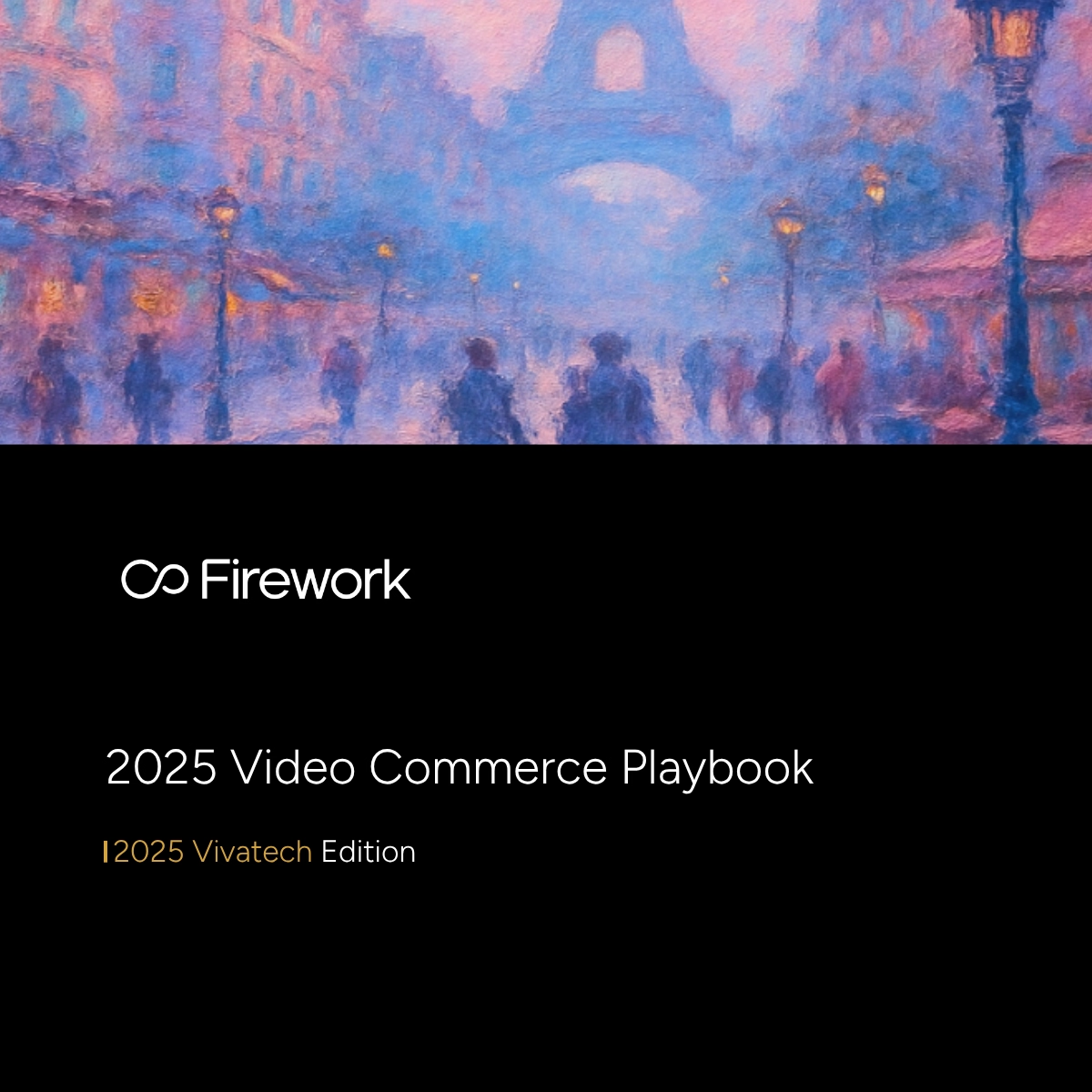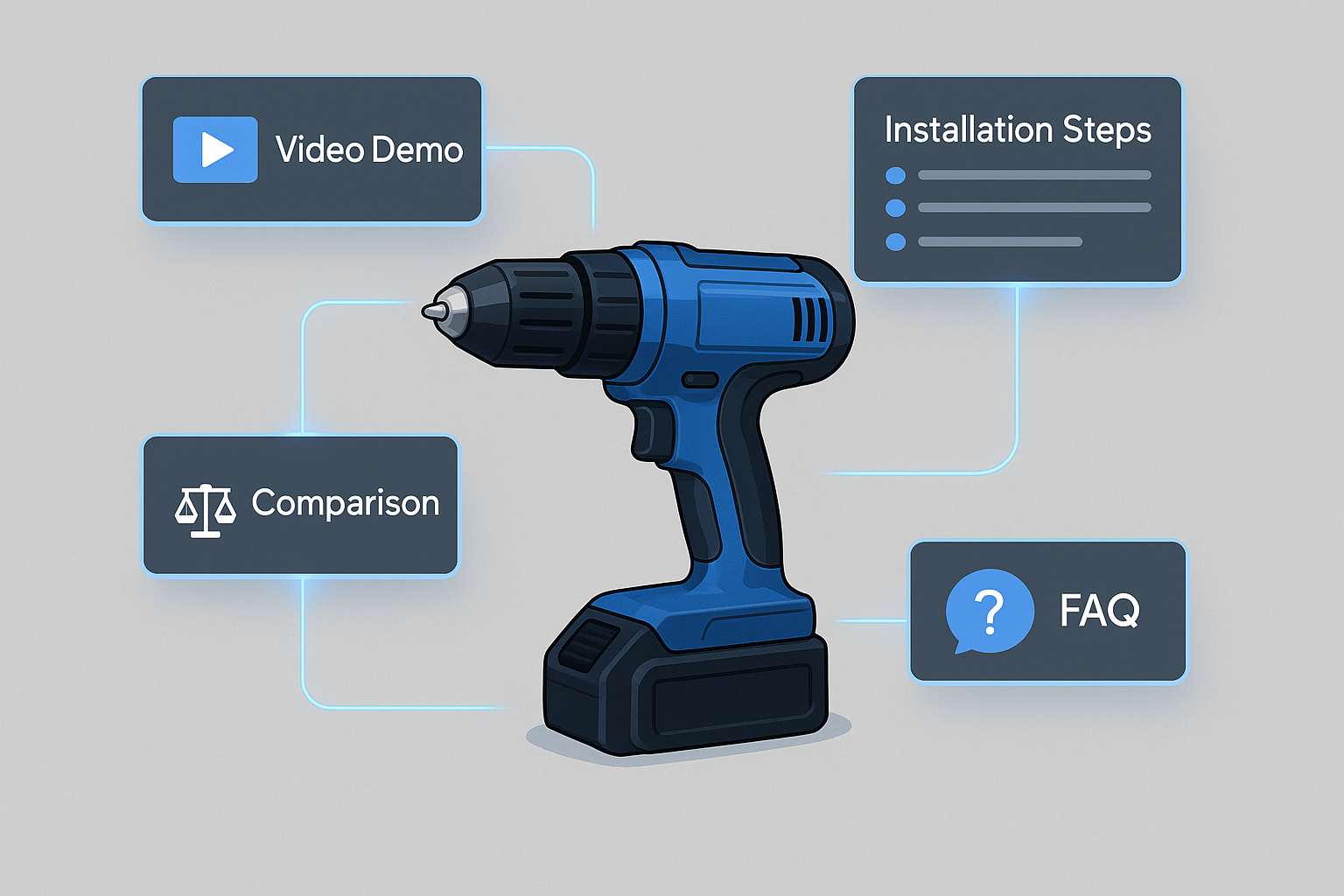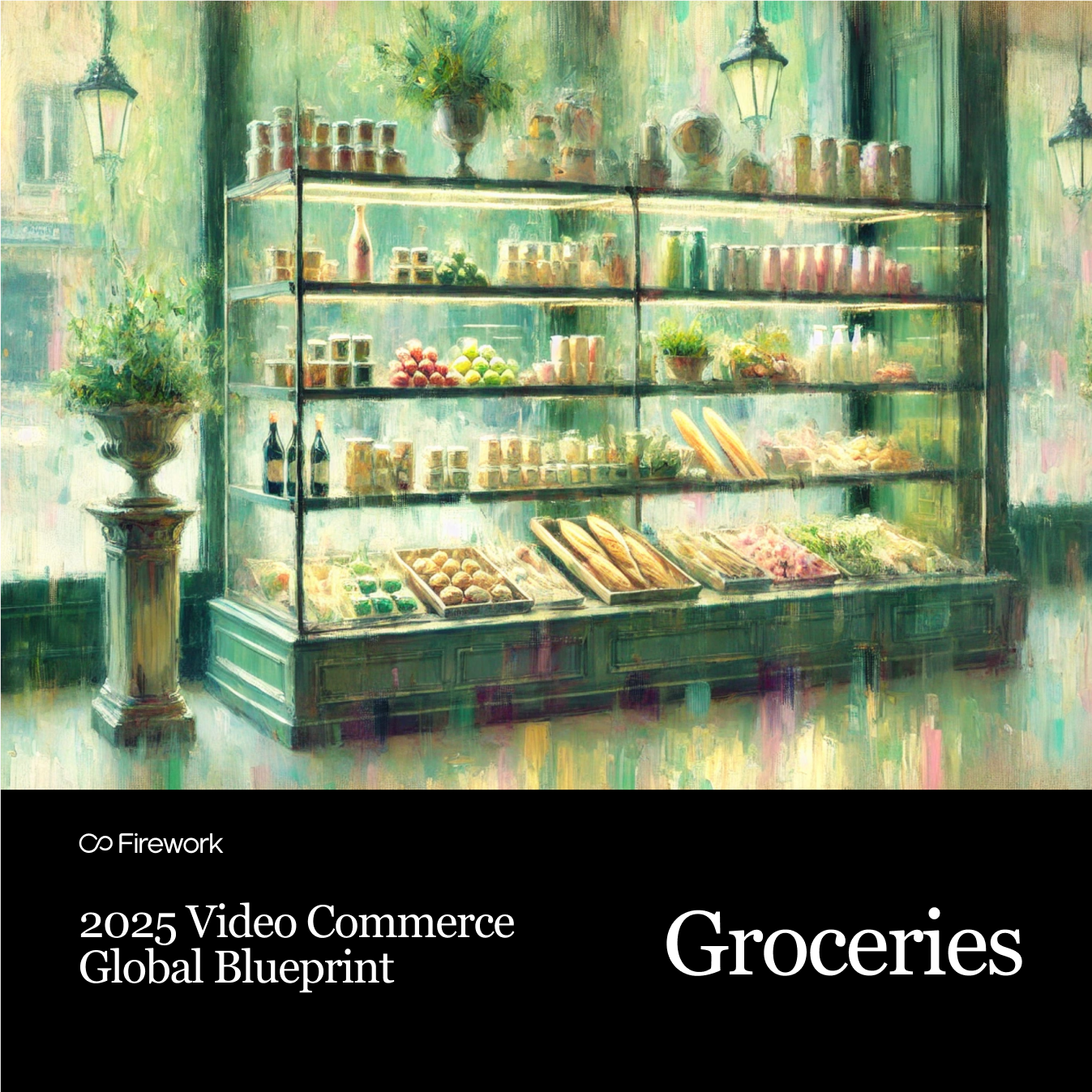The home improvement category has always been a different kind of retail. Shoppers aren’t just buying products, they’re buying outcomes. They want to know how something works, how to install it, how it fits, and whether it will actually solve the problem in their home.
But most retail sites still rely on static photos to communicate value. And in 2025, that’s no longer enough.
Home improvement shoppers need context, clarity, and confidence, and traditional PDPs rarely deliver all three. The result? High bounce rates, abandoned carts, and overwhelmed customers who end up researching on YouTube, TikTok, or competitor sites instead.
The content gap is now one of the biggest conversion risks in the home improvement category.
1. Home Improvement Shoppers Have Higher Stakes — and Higher Anxiety
Buying a dress online is low risk. Buying a power tool, appliance, light fixture, or flooring is not.
Home improvement shoppers ask more questions because:
- the product is technical
- compatibility matters
- installation matters
- mistakes are expensive
- returns are a hassle
- project timelines are tight
Static images can’t answer:
- Will this fit my space?
- How do I install this?
- What’s the difference between these two models?
- Does this solve the root issue I have?
- Is this the right tool for my skill level?
When answers aren’t provided on the PDP, the journey breaks. And once the shopper leaves the page? They rarely come back.
2. Shoppers Want Demonstrations, Not Descriptions
Home improvement is a demonstration-driven category. Shoppers want to see:
- tools in action
- real-size scale
- materials up close
- before/after transformations
- installation process
- sound, power, or speed
- durability or performance
Static photos flatten the experience.
Shoppers now expect:
- short demo videos
- 360° views
- how-to clips
- installation walkthroughs
- comparison visuals
- project-based examples
Retailers who rely solely on images are forcing the shopper to do the interpretation themselves, and many won’t.
3. The Rise of Multimodal Discovery Has Changed Expectations
Generative AI, conversational search, and TikTok-style video culture have created a new baseline: shoppers expect explanations, not just representations.
People want answers “in motion”:
- Show me how this drill performs on concrete.
- Compare the brightness between these two bulbs.
- Show me what this faucet looks like with matte black hardware.
- Explain the difference between a stud finder and a multi-scanner.
This isn’t optional anymore, it’s what consumers believe a modern shopping experience should feel like.. If retailers don’t provide this content on the PDP, shoppers find it on YouTube or TikTok… and purchase somewhere else.
4. The Content Gap Costs Retailers Traffic, Time, and Revenue
When shoppers can’t find the information they need:
- they leave the site to research elsewhere
- they choose safer, simpler products
- they avoid higher-ticket items
- they abandon projects entirely
- they call customer support
- they buy from brands with better content
In home improvement, where margins are tight and competition is intense, these outcomes have serious impact.
Shoppers who leave to “look for more info” often convert on competitor sites that offer richer experiences.
5. Why Richer Content on PDPs Drives Higher Conversion
Home improvement retailers see higher conversion when they add:
- Product demo videos (showing use cases, sound, speed, material texture)
- Installation walkthroughs (step-by-step clarity)
- Dynamic FAQs for troubleshooting and pre-purchase questions
- Comparison modules that make specs easy to interpret
- Project-based video inspiration
- Visuals that show scale, context, and real environments
These formats do what static photos can’t: They bridge the confidence gap. Shoppers don’t just understand what something is, they understand how it works, how it fits, and why it solves their problem, and that's what drives the final decision.
6. The PDP Needs to Evolve Into a Home Improvement “Experience Hub”
The future of home improvement shopping won’t be static. It will be:
- video-led
- AI-assisted
- answer-first
- tailored to skill level
- project-based
- dynamic and context-aware
The modern PDP should feel like a personalized mini showroom. One that demonstrates, compares, explains, and reassures. Not a flat catalog page.
The brands and retailers who bridge the content gap will own the home improvement shopper of the next decade. Those who don’t will continue losing them to platforms where the content already lives.
Connect with an expert to understand how richer product content drives higher conversion.
FAQ
1. What is the “content gap” in home improvement?
It’s the disconnect between what shoppers need to make a confident purchase (demos, installation guidance, comparisons) and what most PDPs currently offer (static photos and text).
2. Why are static images not enough for home improvement shoppers?
Home improvement purchases are technical and high-risk. Shoppers need to see products in action — not just how they look.
3. What types of content drive the most confidence?
Video demos, installation walkthroughs, troubleshooting answers, real-world use cases, and comparison content.
4. Does richer PDP content actually improve conversion?
Yes. Retailers consistently see higher conversion, lower bounce, and fewer returns when visual proof is added to PDPs.
5. Which retailers are leading the way?
Big-box leaders in home improvement are investing heavily in video demos, interactive experiences, and AI-led assistance — especially for tools, fixtures, hardware, and installation-heavy categories.
6. How does AI help close the content gap?
AI can automatically match content to shopper intent, generate dynamic FAQs, and serve video-based answers directly on PDPs.
Unlock Exclusive Insights
By submitting this form, you agree to Firework's privacy policy and consent to receive personalized marketing communications. You can unsubscribe at any time.
